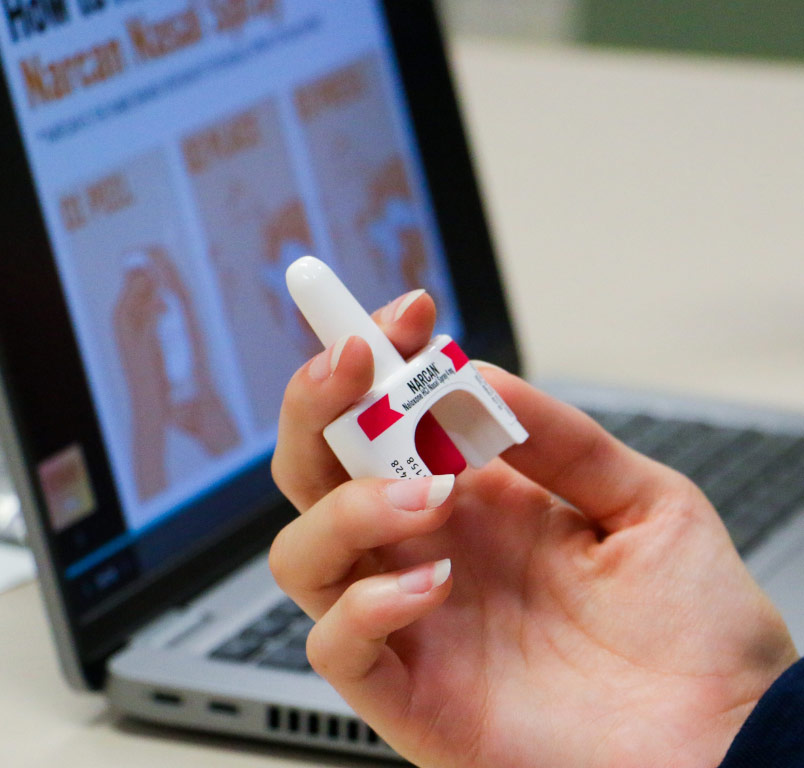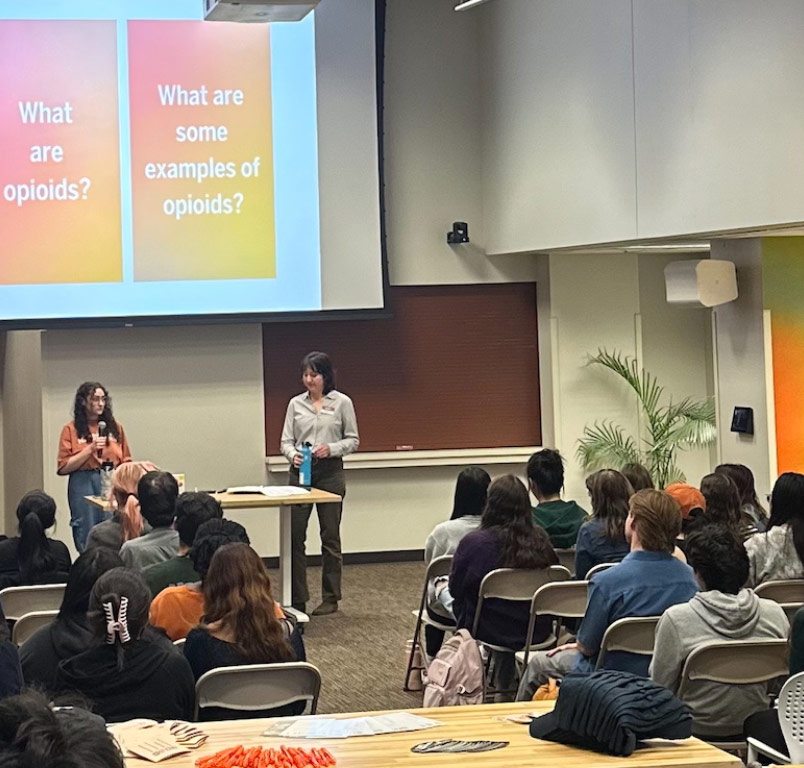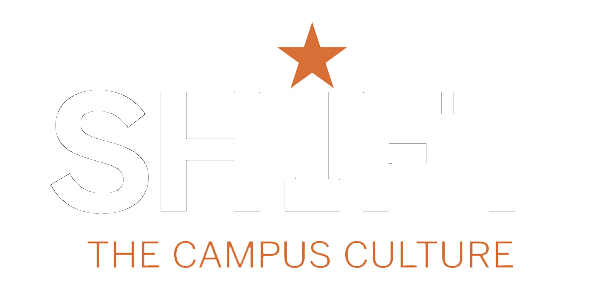
Know the signs. Carry Narcan. Save a life.
In collaboration with the College of Pharmacy, SHIFT’s Operation Naloxone aims to educate and empower the UT Austin community to reduce opioid overdoses and overdose deaths through naloxone access, distribution, and education.
Naloxone is a life-saving medication used to reverse the effects of an opioid overdose in 2-3 minutes. Narcan is the name brand and nasal spray version of naloxone.


Free Narcan Access on Campus
All UT students, faculty, and staff can pick up free Narcan at various locations on campus—no questions asked.
Operation Naloxone Training
Learn how to prevent and respond to an opioid overdose with SHIFT. Open to all UT student groups and organizations, staff, and faculty.
Naloxone Doses
Distributed
People Trained in Opioid Overdose Prevention
Narcan Distribution
Sites
Narcan Emergency Access Sites
| Before attending Operation Naloxone training | After attending Operation Naloxone training | |
|---|---|---|
| 44% | Know the steps to respond to an opioid overdose or emergency involving alcohol or other drugs. | 97% |
| 52% | Agree that they can recognize the signs and symptoms of any opioid overdose. | 98% |
| 59% | Aware of the behaviors that increase the chance of experiencing an opioid overdose. | 97% |
Before and after attending Operation Naloxone training
44% to 97%
Know the steps to respond to an opioid overdose or emergency involving alcohol or other drugs.
52% to 98%
Agree that they can recognize the signs and symptoms of any opioid overdose.
59% to 97%
Aware of the behaviors that increase the chance of experiencing an opioid overdose.
-
What is naloxone/Narcan and why should I carry it?
Naloxone is a life-saving medication used to reverse the effects of an opioid overdose in 2-3 minutes. Narcan is the name brand and nasal spray version of naloxone. It is not a controlled substance and cannot cause harm even if the person is not experiencing an opioid overdose.
Carrying Narcan and knowing how to use it can save a life. Even if you don’t know someone using opioids, you might be in a situation where it matters. Narcan is an important medical tool – just like an EpiPen is a life-saving tool for those with severe allergies.
-
Can you overdose on Narcan?
No, you cannot overdose on Narcan and is not harmful to individuals who are not experiencing an opioid overdose. However, those with physical dependence on opioids may experience withdrawal symptoms after receiving a dose.
-
How do I administer Narcan?
Learn how to administer Narcan nasal spray by watching this video.
-
Can you overdose by touching or being near the synthetic opioid, fentanyl?
No, you cannot overdose by touching or being near fentanyl. Fentanyl’s chemical structure and properties mean it doesn’t pass through the skin without additives to help it along. Because fentanyl is a heavy molecule, it doesn’t linger in the air and does not pose an accidental inhalation risk.
-
Where can I learn more about opioid overdoses?
You can learn more about opioid overdoses here by:
- Requesting an Operation Naloxone training for your organization, group, or department
- Attending one of our quarterly Operation Naloxone trainings, open to all UT students, faculty, and staff. Dates will vary—please follow us on Instagram for training announcements.
- Visiting this Healthyhorns webpage.
SHIFT Talk: "Conversations on Counterfeit Rx Drugs and Fentanyl"
Watch the recording from the 2022 event to hear from our panelists and learn more about fentanyl and counterfeit prescription drugs. Featured panelists: Dr. Lori Holleran-Steiker; Claire Zagorski, MSc, LP; Dr. Kasey Claborn; and Daniel Sledge, BA, LP.
